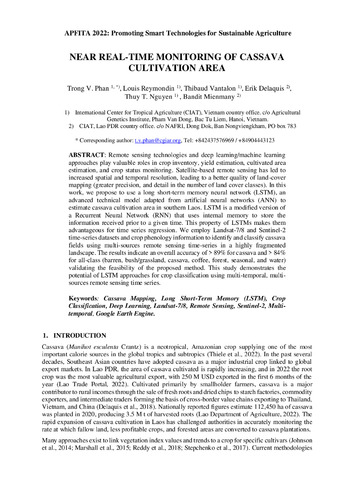Near real-time monitoring of cassava cultivation area
Remote sensing technologies and deep learning/machine learning approaches play valuable roles in crop inventory, yield estimation, cultivated area estimation, and crop status monitoring. Satellite-based remote sensing has led to increased spatial and temporal resolution, leading to a better quality of land-cover mapping (greater precision, and detail in the number of land cover classes). In this work, we propose to use a long short-term memory neural network (LSTM), an advanced technical model adapted from artificial neural networks (ANN) to estimate cassava cultivation area in southern Laos. LSTM is a modified version of a Recurrent Neural Network (RNN) that uses internal memory to store the information received prior to a given time. This property of LSTMs makes them advantageous for time series regression. We employ Landsat-7/8 and Sentinel-2 time-series datasets and crop phenology information to identify and classify cassava fields using multi-sources remote sensing time-series in a highly fragmented landscape. The results indicate an overall accuracy of > 89% for cassava and > 84% for all-class (barren, bush/grassland, cassava, coffee, forest, seasonal, and water) validating the feasibility of the proposed method. This study demonstrates the
potential of LSTM approaches for crop classification using multi-temporal, multi-sources remote sensing time series.

